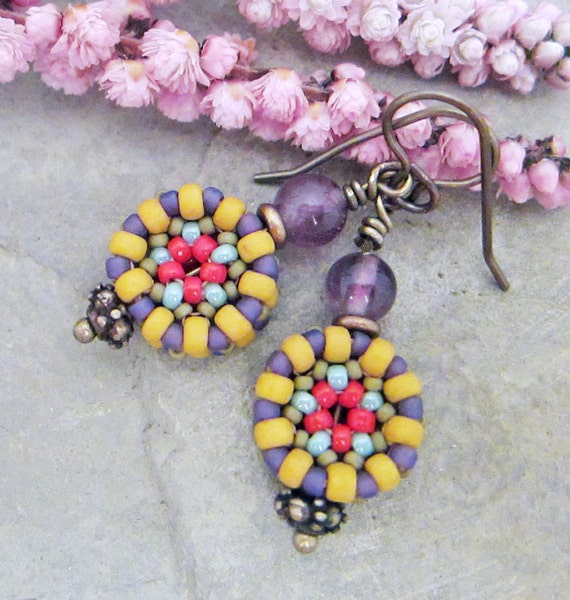Since prehistoric times, what is now known as Oaxaca, had been known for jewelry production. The area was rich in gold, silver, semi-precious stones and pearls. Sophisticated goldsmithing skills were probably acquired from South and Central America, via the maritime trade routes.
 |
| (all photos by Linda Landig) |
Soon after Cortes set foot in Mexico, beads became a standard item of trade. Many of the old necklaces were made with red white-heart beads made in Italy in the 16th century and brought to Mexico by traders. Another popular trade bead were chevron beads from Venice. Chevron beads were mostly traded in the southern part of Mexico, including Oaxaca
In the Santo Domingo Museum, in Oaxaca, one can see documentation, drawn by the friars, of beads used by the indigenous population.
Even today, among the more isolated Indian groups, the main personal adornments are strands of dried berries, seed pods, small shells and glass beads brought by traders. One sees this type of necklace in the local open markets. Sometimes little old coins or small silver charms in the form of animals, religious symbols or bells are dangled from the beaded necklaces.
In San Pedro Quiatoni, a small town south of Oaxaca city, women wore unusual necklaces of long glass beads from the 16th century. The glass rods are about 2.5 inches long, with a looped end, so they can be strung. These necklaces have been handed down through the generations and some were brought to the larger cities for sale. They are are sometimes seen today at festivals. Our landlady was the proud owner of one of these distinctive necklaces.
In time, the Spanish friars and priests taught the indigenous Mexicans traditional Spanish styles of metalsmithing. Initially the Spaniards focused on the creation of religious jewelry, such as crucifixes and rosaries and ornamentation for the churches.
We were in Oaxaca during Holy Week and saw these statues of Mary during a Good Friday procession. Notice all the gold and silver ornamentation.
Often the same goldsmiths that created church ornamentation, such as those in these pictures, also produced personal jewelry for the wealthy.
Eventually personal adornment became more prominent in Mexico. Jewelry was created in gold and silver and was embellished with pearls, coral and diamonds. Until Independence in 1810, the jewelry was Colonial Baroque in style.
Filigree was introduced to the Mexicans by the Spaniards, who had, in turn, probably learned it from the Moors.

Most every woman in Mexico wears earrings and nearly every baby girl's ears are pierced and decorated with tiny gold rings. The most common earring shape is a crescent, which likely originated with the Moors. These are commonly filigree with a fringe of little balls or drops.
Most of what you see in the shops these days is simply gold or silver colored metals or perhaps plated metals. Precious metal filigree earrings are available too but at a much greater price! I took this picture in artisan craft store, but I'm quite sure that they are just plated.
It is interesting to note that individual villages have developed distinct styles of jewelry design. Because the villages were traditionally quite isolated, the styles did not spread.
Yalalag women of Oaxaca wore a distinctive style of cross necklace. The necklaces are either gold or silver. They typically had a large central cross with several smaller crosses suspended from it. The young unmarried women from Yalalag traditionally wore earrings, while the cross necklace was worn upon marriage.



























